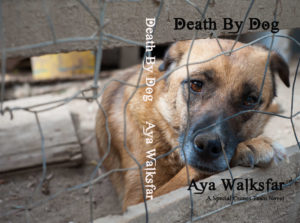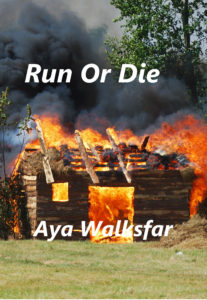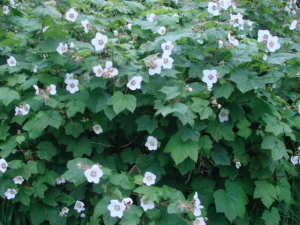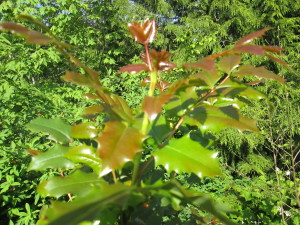Not all horror involves zombies and the undead. When you pick up one of my mysteries you will embark upon a journey that will horrify, terrify, and, ultimately, uplift you.
- Sketch of a Murder: When the legal system fails women and children, The Avenger dispenses a unique brand of justice. Sergeant Nita Slowater and the Special Crimes Team must stop the Avenger before an innocent man dies!
In the real world, true horror occurs every day with the failure of our legal system to protect children from sexual abuse; and the failure of that same legal system to provide justice to women who have been sexually assaulted. All too frequently what happens is the child is told to stop telling lies and the women are interrogated as if they committed a crime by being assaulted.
https://www.amazon.com/Sketch-Murder-Special-Crimes-Team-ebook/dp/B00KU6AIPQ -
Street Harvest: A group of dedicated people frantically search for human traffickers targeting street kids in this fast-paced novel.
In the real world of our modern-day United States, a child goes missing every 40 SECONDS! As a transient population, street kids are at the highest risk to go missing and become a victim of human trafficking. And, LGBTQ youth are particularly at-risk since they comprise over 40% of the street kid population.
Children as young as six-years-old are raped, sodomized, tortured, and sometimes murdered in snuff films for the ‘entertainment’ of perverted men, usually Caucasians. Other children are shipped overseas to brothels for the perverted pleasures of men who fly in from industrialized nations to partake of that which is illegal in their own countries.
https://www.amazon.com/Street-Harvest-Special-Crimes-Team-ebook/dp/B00KVREDIC -
Backlash: Success can be deadly…if you’re a woman. The clock begins ticking with the abduction of successful attorney, Eleanor Delaney. Sergeant Nita Slowater and the Special Crimes Team must piece together a puzzle that began thirteen years ago.
In the real world successful women, such as First Lady Michelle Obama, are targeted for harassment that ranges from insinuations to verbal/emotional attacks, and sometimes to physical assaults. As an ordinary woman, I understand some of what such women endur for I, too,–like every woman–live each day never knowing if I will be harassed, sexually assaulted or physically attacked.
Rape is a reality that overshadows women from birth to death. One in three women will be sexually assaulted by the age of 18. No woman is safe whether she is on a college campus, working in an office, riding mass transit, broke down on a lonely road, or sleeping in her own home. There is no greater horror than to live with the knowledge that you never know when you might become a victim.
https://www.amazon.com/Backlash-Special-Crimes-Team-Book-ebook/dp/B00W7UJAWA

-
Death by Dog: When savaged bodies begin piling up, Sergeant Nita Slowater and the Special Crimes Team must stop dog fighters who are turning dogs into deadly weapons.
In the real world, #dog is man’s best friend, but man is often a dog’s worst enemy. Ghandi is credited with saying, “The greatness of a nation and its moral progress can be judged by the way its animals are treated.” Here in the United States dog fighting is a thriving so-called ‘sport’. Dogs whose only crime is to be bought, raised, or sold to dog fighters will live a life in cages, beaten, starved, and set upon by larger dogs all in the name of ‘entertaining’ men.
Like domestic violence and rape, dog fighting crosses all socio-economic strata. At a dog fight you can find a doctor, a lawyer, a judge, an athlete, or the CEO of a large corporation right alongside of all types of criminals, drug dealers, and wanna-be gangstas.
https://www.amazon.com/Death-Dog-Crime-Team-Book-ebook/dp/B01B5NXY4E

NOTE: Set in the beautiful Pacific Northwest, ALL books in the Special Crimes Team series can be read as STAND-ALONES. Grab your copy today!
- Run or Die: Jaz Wheeler never realized that farming could be hazardous to her health until six men issued the ultimatum: run or die!
In the real world, there is nothing more horrifying, more frightening than to be attacked because of the color of your skin or because of your sexual orientation, and to know that those who are charged with serving and protecting you may be some of the very ones assaulting you. Not knowing if you will survive to see another sunrise, with nowhere to run, with no place to hide, and with no one to turn to, you face death truly alone.
Run or Die is a work of fiction based on fact. Sadly, racism and homophobia are alive and deadly here in our country. The current hate-mongering election is feeding the flames of violence that could burn up all of us.
https://www.amazon.com/Run-Die-Aya-Walksfar-ebook/dp/B00KV8BK5A




